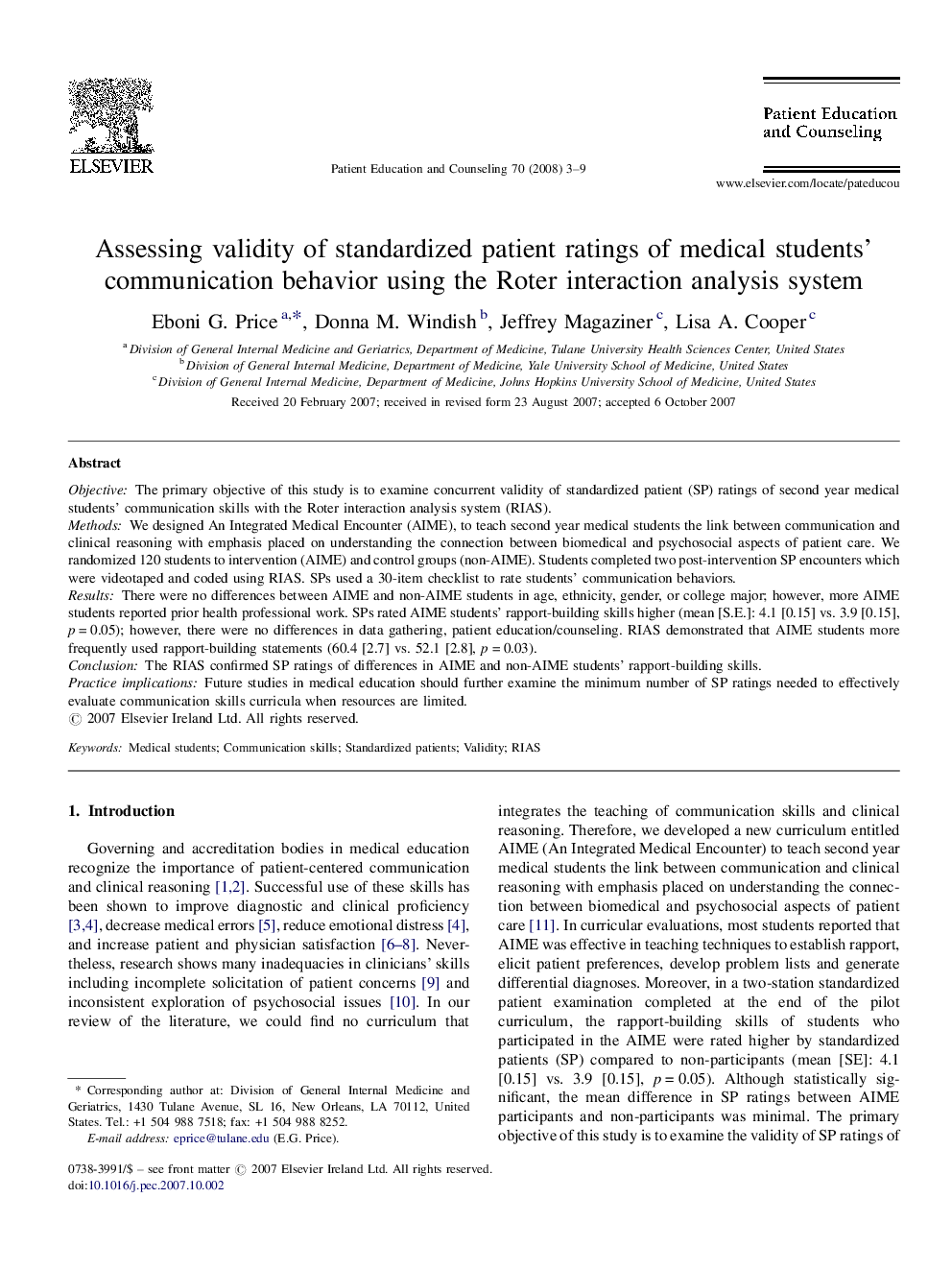| Article ID | Journal | Published Year | Pages | File Type |
|---|---|---|---|---|
| 3816404 | Patient Education and Counseling | 2008 | 7 Pages |
ObjectiveThe primary objective of this study is to examine concurrent validity of standardized patient (SP) ratings of second year medical students’ communication skills with the Roter interaction analysis system (RIAS).MethodsWe designed An Integrated Medical Encounter (AIME), to teach second year medical students the link between communication and clinical reasoning with emphasis placed on understanding the connection between biomedical and psychosocial aspects of patient care. We randomized 120 students to intervention (AIME) and control groups (non-AIME). Students completed two post-intervention SP encounters which were videotaped and coded using RIAS. SPs used a 30-item checklist to rate students’ communication behaviors.ResultsThere were no differences between AIME and non-AIME students in age, ethnicity, gender, or college major; however, more AIME students reported prior health professional work. SPs rated AIME students’ rapport-building skills higher (mean [S.E.]: 4.1 [0.15] vs. 3.9 [0.15], p = 0.05); however, there were no differences in data gathering, patient education/counseling. RIAS demonstrated that AIME students more frequently used rapport-building statements (60.4 [2.7] vs. 52.1 [2.8], p = 0.03).ConclusionThe RIAS confirmed SP ratings of differences in AIME and non-AIME students’ rapport-building skills.Practice implicationsFuture studies in medical education should further examine the minimum number of SP ratings needed to effectively evaluate communication skills curricula when resources are limited.
